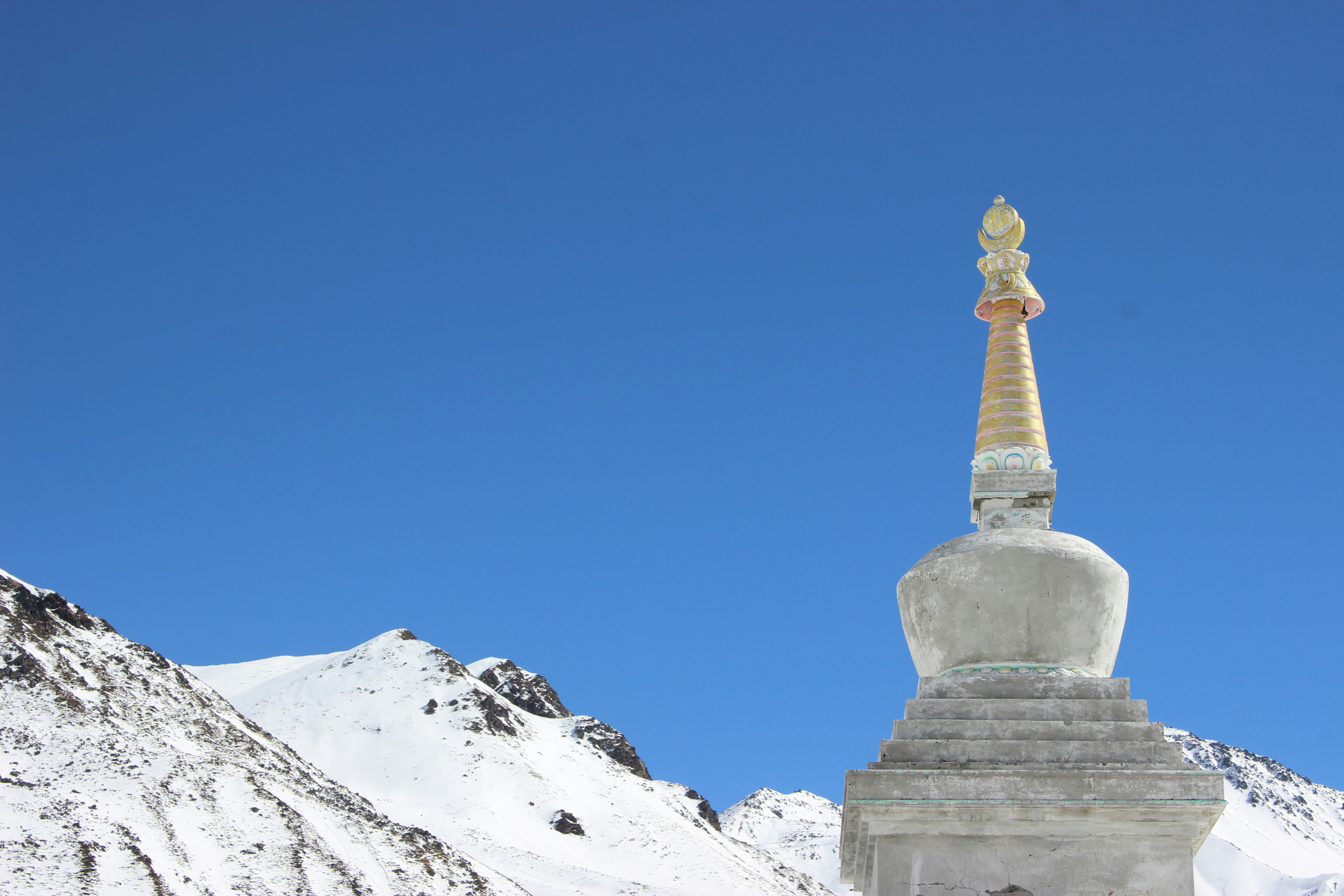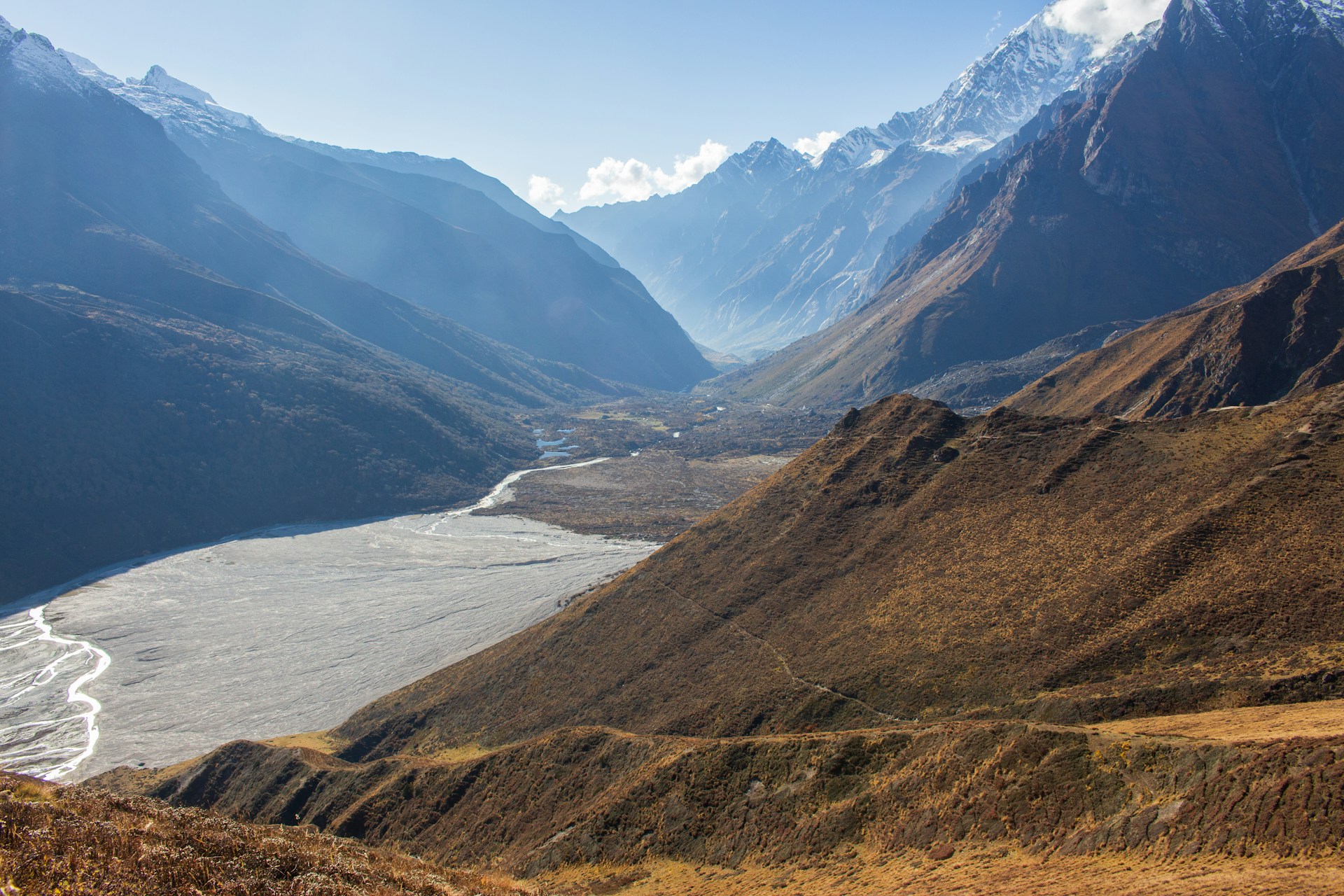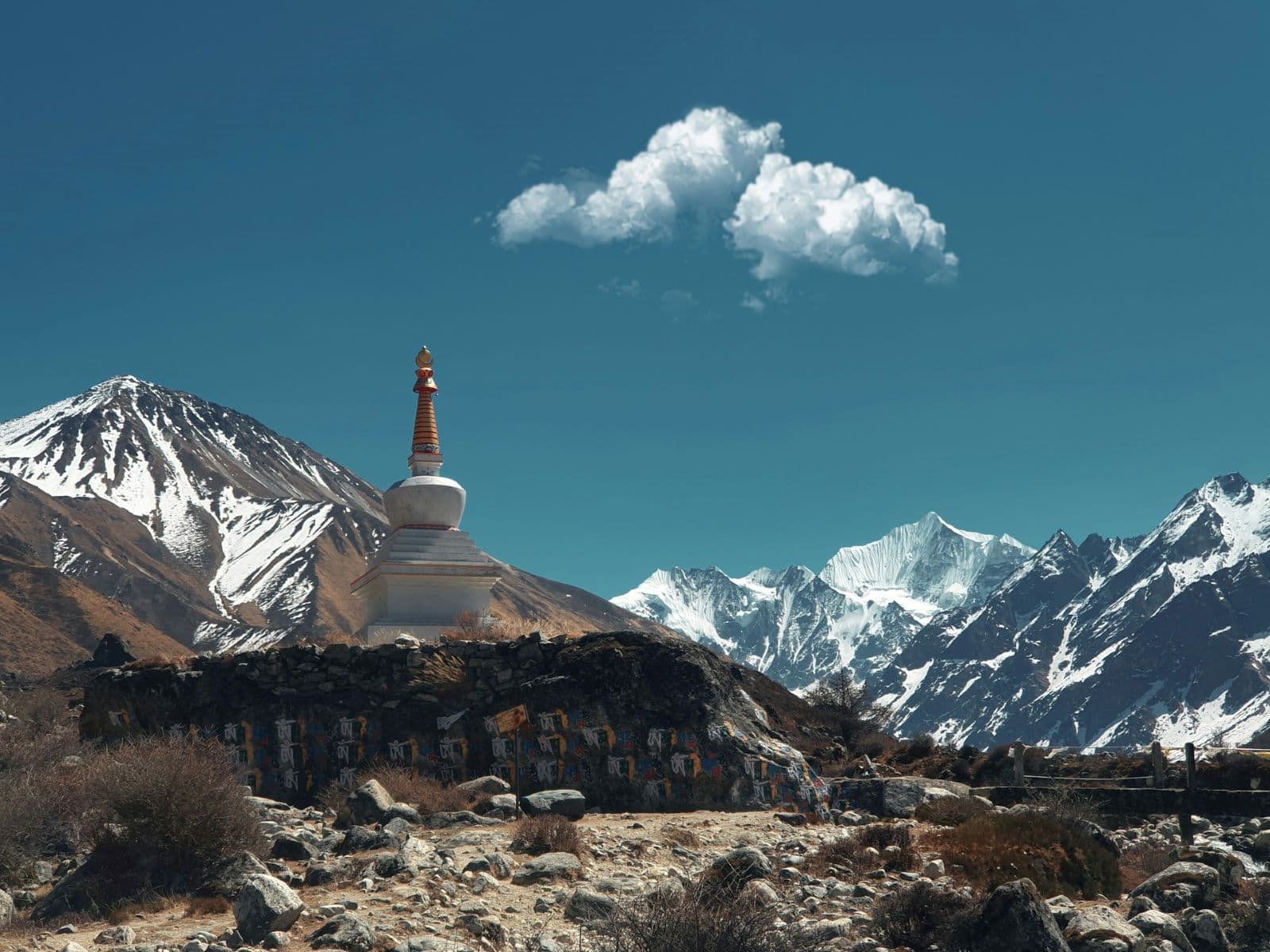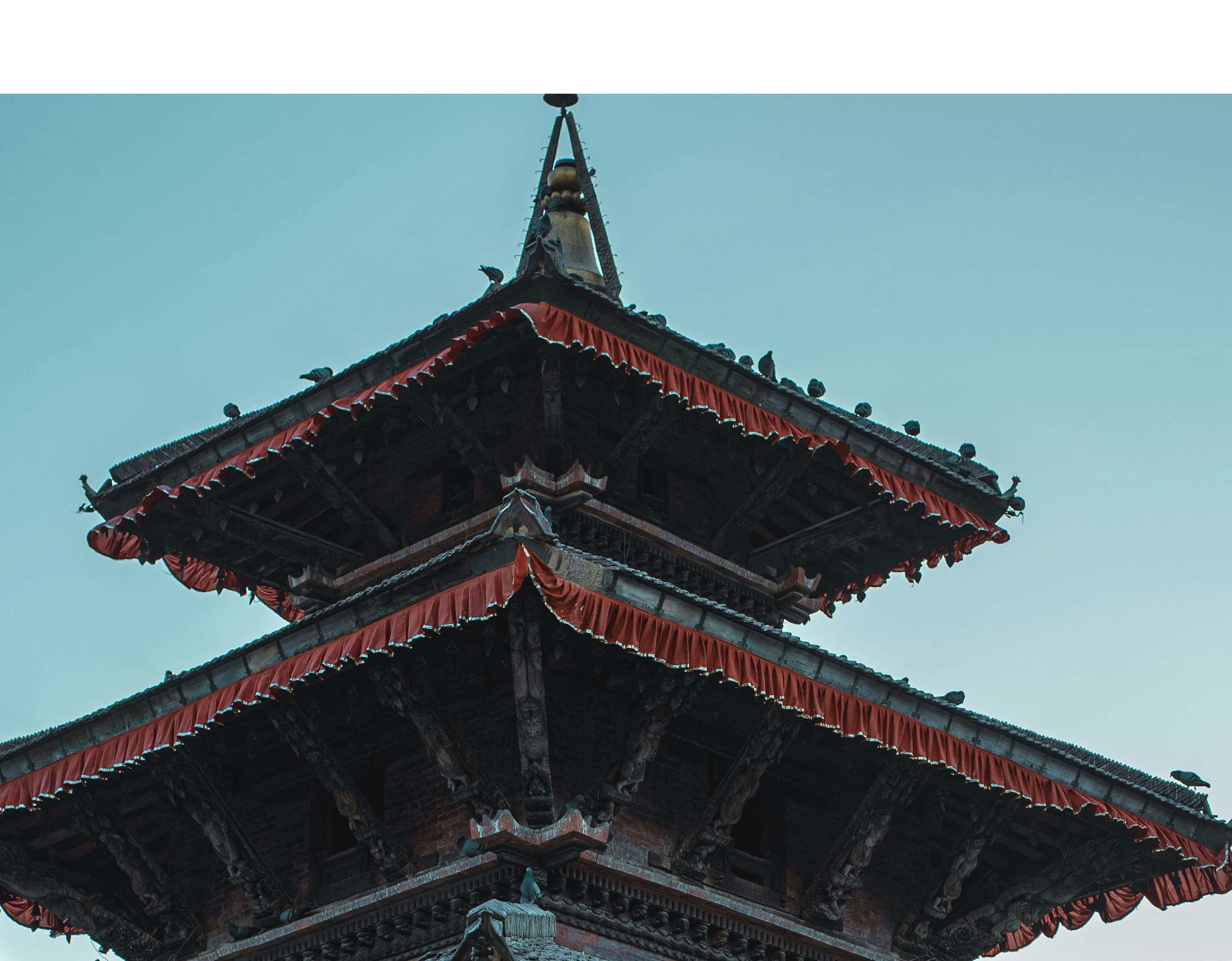On a captivating journey through the Langtang Valley, an enchanting realm where majestic landscapes and rich Tamang culture converge to offer an unforgettable trekking experience. Nestled within the breathtaking confines of the Himalayas, just north of Kathmandu, the Langtang Trek is often hailed as one of Nepal's best-kept secrets. This trek invites adventurers to explore the "Valley of Glaciers," where towering snow-capped peaks create a stunning backdrop to the vibrant, green landscapes below.

As you venture through this less-traveled path, you'll encounter the Langtang National Park, home to diverse flora and fauna, including the elusive red panda and the Himalayan tahr. The trail meanders through ancient forests, over babbling brooks, and past yak pastures, leading to the spiritual heart of the region, Kyangjin Gompa. This sacred monastery, nestled amidst the dramatic highlands, offers not just spiritual solace but also panoramic views of Langtang Ri, Langtang Lirung, and surrounding peaks, making it a highlight of the trek.
The Langtang Trek also provides a unique opportunity to immerse oneself in the Tamang culture. The local communities, with their Tibetan-influenced traditions, warm hospitality, and intricate handicrafts, enrich the journey, offering insights into a lifestyle that has remained unchanged for centuries. From savoring local delicacies like yak cheese to participating in traditional Tamang dances, trekkers can experience the rich cultural tapestry of the region.
Recovering from the devastating 2015 earthquake, Langtang has shown resilience and the unwavering spirit of its people. Today, trekking through Langtang not only promises an adventure through some of Nepal's most stunning landscapes but also supports the rebuilding efforts of the local communities. Whether you're drawn by the allure of high mountain passes, the tranquility of alpine forests, or the charm of Himalayan culture, the Langtang Trek offers a journey that captivates the heart and soul of every explorer.
Your travel route, meticulously plotted on maps and guided by experienced locals, meanders through lush forests, expansive meadows, and alongside glistening mountain streams, each turn revealing vistas more scenic than the last. The path leads adventurers from the vibrant terraces of Syabrubesi to the serene spirituality of Kyanjin Gompa, with the towering Langtang Lirung and Ganesh Himal standing guard over the valley.
One of the most incredible things about Langtang is its ability to blend adventure with cultural immersion seamlessly. The trek provides a deep dive into the Tamang culture, where the lifestyle, traditions, and architecture reflect a profound connection with Tibetan Buddhism. The Tamang people's warm hospitality invites trekkers into their world, offering a glimpse of their resilience and devotion, woven into the fabric of their daily lives.
The journey is not just a physical trek but a cultural pilgrimage, inviting you to partake in rituals, savor local cuisine, and understand the Tamang people's style and ethos. The mountains here are not just scenic backdrops but sacred entities that shape the valley's spiritual landscape.
Langtang's allure lies not merely in its paths tread but in the stories and smiles of its people, the ancient whispers of its winds, and the untouched beauty of its terrain. Trekking through Langtang is to walk a route paved with discovery, where every step is a story, and every vista a memory etched in the heart of the traveler.
Majestic Facts about Langtang Region Trekking:

Trekking in the Langtang region unveils a series of incredible things that make this journey unforgettable. From its breathtaking landscapes to its rich cultural tapestry, here are some of the highlights that captivate trekkers from around the globe:
Diverse Ecosystems: Langtang offers a remarkable variety of flora and fauna within its diverse ecosystems, ranging from subtropical forests at lower elevations to alpine scrubs and ice flows at higher altitudes. Trekkers can witness the vibrant rhododendrons in bloom and spot rare wildlife such as the red panda, Himalayan tahr, and various species of birds.
Majestic Peaks: The region is dominated by the impressive Langtang Lirung (7,234m), providing a stunning backdrop to the trek. The trek also offers views of other significant peaks such as Ganesh Himal, Langtang Ri, and Yala Peak, presenting trekkers with awe-inspiring Himalayan panoramas.
Tamang Heritage: The trek through Langtang is as much a cultural journey as it is a natural one. Trekkers get to immerse themselves in the rich Tamang culture, with its Tibetan Buddhist roots, experiencing local hospitality, traditional lifestyles, and ancient monasteries like Kyanjin Gompa, which is a spiritual hub in the valley.
Langtang Valley: Often referred to as the "valley of glaciers," the Langtang Valley itself is an incredible sight, with its rugged beauty, serene meadows, and the meandering Langtang River. The valley, combined with the warm hospitality of its people, offers a serene and inviting atmosphere for all who venture here.
Kyanjin Ri and Tserko Ri: For those seeking to challenge themselves, the ascents of Kyanjin Ri and Tserko Ri provide an opportunity to experience even more breathtaking views of the Langtang range without the technical challenges of peak climbing. These vantage points offer panoramic views that are simply unparalleled.
Langtang’s Resilience: Witnessing the resilience of Langtang and its people, especially after the devastating earthquake of 2015, adds a layer of profound respect and admiration to the trekking experience. The rebuilding efforts and the community's spirit showcase the strength and endurance of the human spirit.
07 Best FAQs About Langtang Region Trekking:
What is the best time to trek in the Langtang Region?
The optimal times for trekking in Langtang are during the spring (March to May) and autumn (September to November) seasons. These periods offer the most stable weather, clear skies, and the best mountain views.
2. How difficult is the Langtang Trek?
The Langtang Trek is considered moderate in difficulty. It's suitable for trekkers with a basic level of fitness and does not require prior high-altitude trekking experience. However, some parts of the trek can be physically demanding.
3. Do I need a guide for the Langtang Trek?
While it's possible to trek Langtang independently, hiring a local guide is highly recommended. Guides provide valuable insights into the local culture, enhance your safety, and can help navigate the trails more effectively.
4. What permits do I need for Langtang Trekking?
Trekkers need a TIMS card (Trekkers' Information Management System) and a Langtang National Park permit. These can be arranged by your trekking agency or obtained in Kathmandu before your trek.
5. Can I see Mount Everest from Langtang?
No, Mount Everest is not visible from the Langtang region. However, Langtang offers stunning views of Langtang Lirung, Ganesh Himal, and other significant peaks that make the trek equally rewarding.
6. What should I pack for the Langtang Trek?
Essential items include warm clothing, waterproof jackets, good quality trekking boots, sleeping bags suitable for cold temperatures, a first-aid kit, sun protection, and personal hygiene items. Don't forget to bring a camera for the breathtaking landscapes!
7. How long does the Langtang Trek take?
The standard Langtang Valley Trek can be completed in about 7 to 9 days. However, adding side trips to places like Tserko Ri or combining it with the Gosainkunda and Helambu treks can extend your journey up to 14 days or more.
08 Good to Know fact about Langtang trekking regions:




